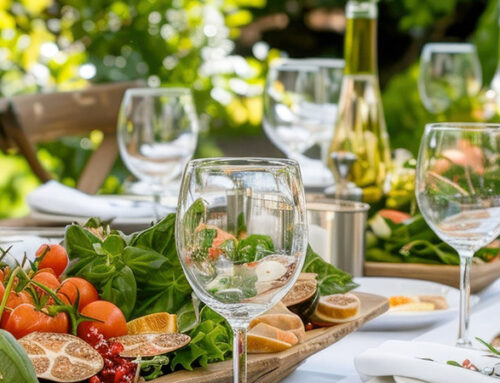Most people have a positive association with the beach, whether it came from a single family vacation long ago or comes from a wave-crashing view that greets you every morning. Either way, it’s a good feeling to evoke in your home. Bathrooms in particular are good spaces in which to inject a nod to the beach. Water; durable, natural materials; a sense of travel and casualness — all elements linked to a sandy-shore lifestyle — form a solid combination for a welcoming bathroom.
Here are eight elements that will help you get the style in your home. 1. A sense of place. First, decide which beach will be your inspiration. The beaches of New England are way different than the ones in Florida, in the Caribbean or up and down California’s coast. “There are beaches that are rocky and moody with huge surf and dark brown sand, or ones with light sand with light blue water,” says Shannon Ggem, an interior designer in Malibu, California. “Some beaches are very green with reeds and dark gray water and taupe-y sand.”
Look at photos of the beach you have in mind and note the color of the water, sand and surrounding vegetation, and the moodiness of the climate. Then determine what natural elements are present. Are there rocks? Shells? Dunes? Lots of driftwood? Wooden piers and fences? Seaweed? Also try to get a good sense of the culture of the beach. Is it all swim trunks and surfboards? Or is it windbreakers and campfires? Ggem suggests looking at historical buildings in the area of the beach you choose, too. “You can tour a historical sea captain’s mansion in New England for $6 and walk away with a pocketful of details,” she says.
All this will help inform your (and your designer’s, if you will be using one) choices of colors, materials and accessories.
For inspiration in this particular project, Ggem’s client was thinking not only of a very specific beach in Santa Barbara, California, but a specific time period too.
“She was thinking of vintage Santa Barbara, a time from before she was born,” Ggem says. “So I pulled vintage advertisements from Catalina and Santa Barbara to see how they sold beaches as fun, wide and sandy. So that’s how this bathroom ended up.”
2. Durable finishes and a sense of service. A fully tiled wall gives the space a beach-changing-room vibe, which hits on a number of related elements. “Beach bathrooms need a service feel,” she says. “They’re hardy and easy to maintain.”
Ggem likes to use fake wood tile (seen here) in her beach-themed bathrooms, because actually being near the beach means the inevitable presence of sand inside her clients’ homes.
“Sand will scratch the crap out of wood floors,” she says. “So the long-plank fake-wood tile has been a godsend.”
Durable finishes lend a sense of casualness, which is also largely associated with beach lifestyles.
3. A sandy, watery, woody color palette. Once you have your beach in mind, that should give you a color palette. Architect Michele Kolb of Rosenberg Kolb Architects suggests starting with the floor or walls to anchor the scheme. “I think of sand, beige and gray tones of sand, so I might do a tile floor in that color palette,” she says. She pulls from watery tones as well, like the crystal blue or light aqua of the Turks and Caicos’ water, where she’s had many clients.
She also pulls color from driftwood, as seen here in a New York bathroom she designed. “It’s a wood color but with a grayer tone, just like wood left on the beach to gray naturally,” she says. The variegated glass tiles, meanwhile, feel like the “undulation of waves in water,” she says.
If you’re still stuck on figuring out a color palette, Ggem recommends starting with sea glass — shards of broken glass rounded and frosted over time. It includes many muted blues and greens.
4. Unpolished finishes. Just like sea glass has that timeworn frosted quality to it, so should finishes in a beach-theme bathroom. “Nothing high gloss or slick,” Kolb says. This means shiny chrome finishes are out, and satin and matte ones are in.
5. Raw wood and other natural materials. Driftwood and weathered wood fencing populate most beaches, so it makes sense to introduce the material if you’re re-creating the style. Natural stone countertops, like the ones seen here, are recommended, too. These offer the movement of nature, which help connect the space to a beach environment. “You can see that water made those lines in the stone,” she says. “You’d be hard-pressed to find a man-made stone countertop in a vintage beach bathroom.”
For this space, Ggem says, she looked to the wooden slat fences on dunes in New England and the grayness of the Atlantic for inspiration. “Everything gets dialed a little bit darker and moodier when thinking of East Coast beaches,” she says.
6. Canopy stripes. Looking to bring in some pattern? Fabric in yellow and white, blue and white, or red and white stripes “just says lawn chair and umbrella,” says Ggem.
Here a small blue and white striped pillow and door curtain do the job. Also note the other elements here: raw wood, a service feel and muted sea colors. It’s a look befitting the shores of the English Channel, where this bathroom is located.
7. The right accessories. “Accessories sell the whole situation,” says Ggem, who recommends picking one focal point and having that be the one thing that “sells” the beach theme. “If you’re going to do a starfish, it better be in a pretty prominent spot,” she says. “Not just three framed starfish prints from a big-box store. It has to be a moment.”
Kolb agrees. “Accessories are critical,” she says. Found beach objects, natural pieces of wood and dune grass are all good candidates for inclusion. “Even vessels that are reminiscent of found antique bottles that might have been in the water,” Kolb suggests.
Not into the whole shell thing? No worries. (Not every beach has shells anyway.) Rope and driftwood are great for punctuating the look without being so obvious.
Paintings and other kinds of artwork reminiscent of seascapes will add to the feel of being near water versus being in an urban environment, but many designers will recommend not overdoing the kitsch. “Life preservers push the limits for me, and anchors and sea horses,” says Ggem. “I get it, but I think it’s better to think in terms of natural materials you see at the beach.”
8. Natural light. Just like with a day at the beach, abundant, natural sunlight is important, says architect Eric Rosenberg of Rosenberg Kolb Architects. “Because when you’re at the beach, there’s so much light, even if it’s diffused by haze.”
Home – Where your story begins…
To learn more about how Coldwell Banker Grass Roots Realty can help you buy or sell a home, please call one please call one of our four offices in:
Grass Valley Office at 530-273-7293
855 Sutton Way, Grass Valley, CA 95945
Nevada City at 530-265-3282
108 Union Street, Nevada City, CA 95959
Penn Valley at 530-432-1131
11364 Pleasant Valley Rd, Penn Valley, CA 95946
South County/LOP at 530-268-1575
10193 Combie Rd, Auburn, CA 95602





